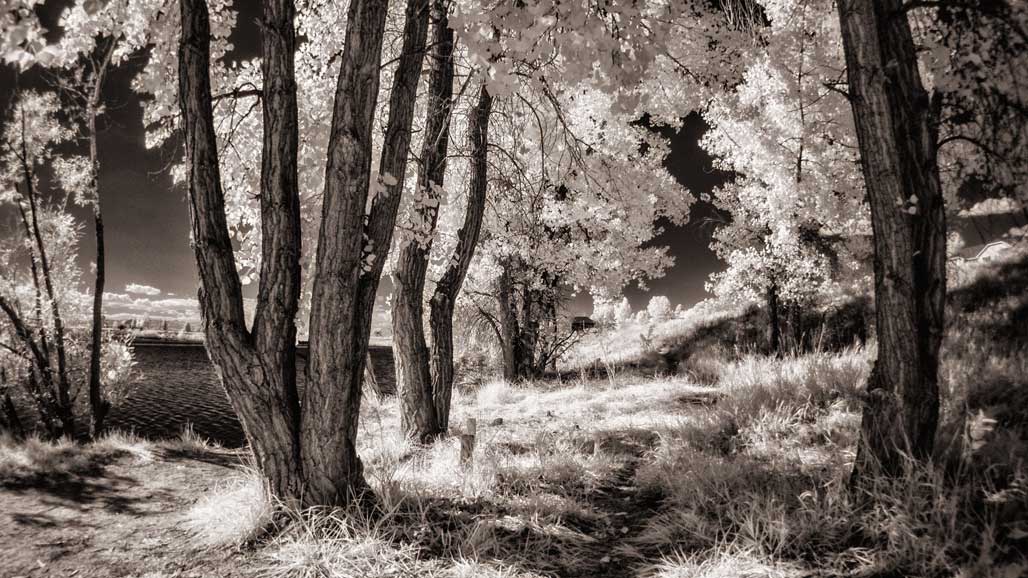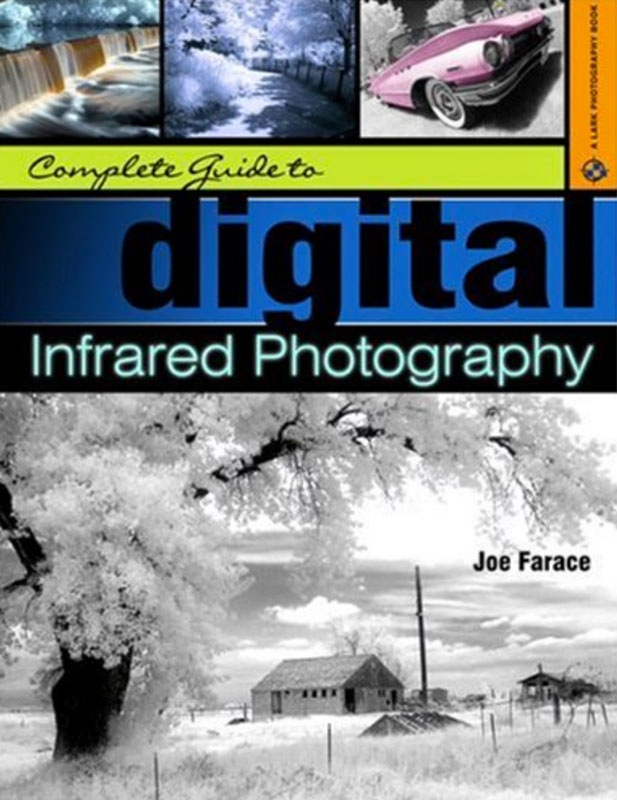Today’s Post by Joe Farace
The real voyage of discovery consists not in seeking new landscapes, but in having new eyes—Marcel Proust
Whenever I’m asked to do a presentation about infrared photography to photographic organizations, I always kick it off with a question that a reader once e-mailed me: “Why do you do infrared photography, when regular photography is already so hard?”

The short answer, for me anyway, is because it’s fun. Sure it’s a bit more techy than shooting traditional visible light photographs but the payoff is that it produces the kind of images you can’t capture any other way. And sure, you will need some specialized gear whether it’s an expensive filter or spending the extra cash to get a camera converted for infrared capture by companies such as Life Pixel. My advice on conversions: Consider converting one of your older cameras that’s just sitting around collecting dust, rather than a bread and butter daily shooter. Or maybe just buy an inexpensive, used camera like I did with the Panasonic Lumix GX1 i bought from Roberts Camera in order to get Life Pixel’s Hyper Color infrared conversion.
Since I live in a part of the country where we have real Winter, all of leaves have already dropped off the trees and any infrared photography will lose the impact of the white leaves that I enjoy. But that doesn’t mean you can shoot infrared in winter. But Spring, they tell me is right round the corner, so I’m looking forward to shooting more digital infrared—maybe film too— real soon now
 How I made this shot: Last year, I went to Bingham Lake and took the counter clockwise path to find some different lakeside views, one of which is shown above. The image was shot with a Panasonic Lumix G5 that had been converted to infrared capture by LifePixel using their Standard IR (720nm) conversion. Lens was the 9mm f/8 Olympus fish-eye lens cap lens and was shot using the camera’s 16:9 crop mode. This is something I soemtime like I do to give a panoramic look as well as minimize any distortion from this lens at the top and bottom of the frame because it’s cropped in-camera. Hand held exposure was 1/640 sec at f/8 and ISO 400.
How I made this shot: Last year, I went to Bingham Lake and took the counter clockwise path to find some different lakeside views, one of which is shown above. The image was shot with a Panasonic Lumix G5 that had been converted to infrared capture by LifePixel using their Standard IR (720nm) conversion. Lens was the 9mm f/8 Olympus fish-eye lens cap lens and was shot using the camera’s 16:9 crop mode. This is something I soemtime like I do to give a panoramic look as well as minimize any distortion from this lens at the top and bottom of the frame because it’s cropped in-camera. Hand held exposure was 1/640 sec at f/8 and ISO 400.
The image was captured in RAW format and processed using Adobe Camera Raw before moving to to Silver Efex where it was copper toned and since these leaves were backlit and appeared to be glowing, I added the Glamour Glow filter from Color Efex. I like the fairy tale mood that this filter produces.
 Life Pixel does a great job with IR conversions and they have done all of conversions for my Canon DSLRs as well as Panasonic Lumix G-series cameras.
Life Pixel does a great job with IR conversions and they have done all of conversions for my Canon DSLRs as well as Panasonic Lumix G-series cameras.
My book, The Complete Guide to Digital Infrared Photography is available from Amazon for with new copies available for $55 and used copies starting around ten bucks bucks, as I write this. Creative Digital Monochrome Effects has a chapter on IR photography and is available from Amazon with new copies at $5.95 with used copies starting at a less than four bucks, as I write this.